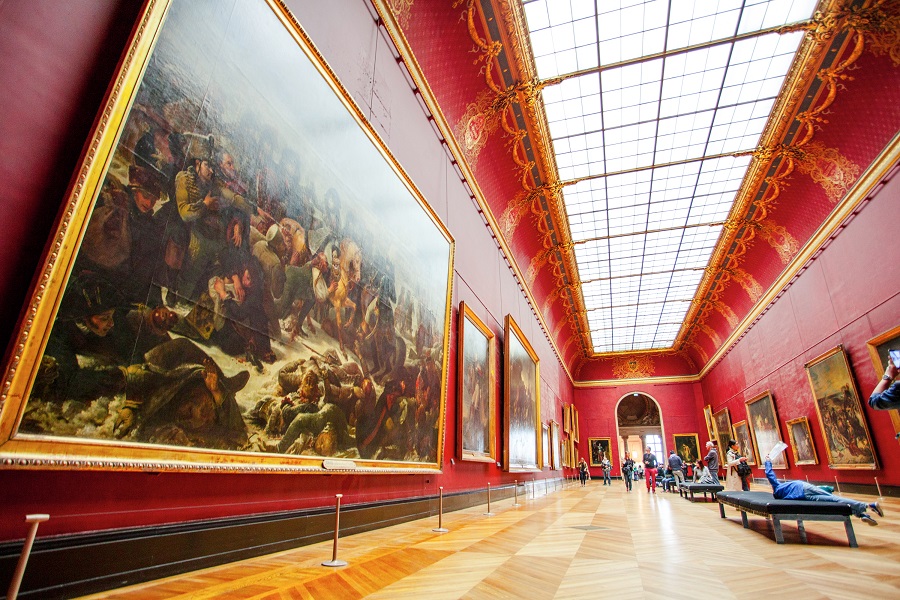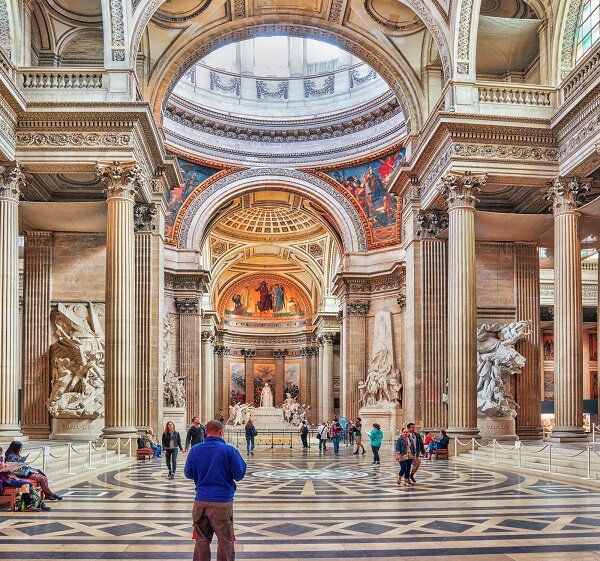This article provides a comprehensive guide to Paris’s art scene, encapsulating the city’s iconic museums, vibrant galleries, and eclectic street art.
It illuminates the rich cultural tapestry of the French capital, offering insightful tips for planning an artistic itinerary.
It caters to an audience seeking to immerse themselves in Paris’s unique artistic ambiance, fostering a sense of cultural belonging.
Exploring the Iconic Museums of Paris
The exploration of iconic museums in Paris reveals a rich tapestry of art history, spanning from antiquity to contemporary works, housed in architectural masterpieces of equal significance.
The Louvre highlights a diverse collection from early civilizations to the 19th century, while Orsay masterpieces deliver an impressive showcase of impressionist and post-impressionist art.
Pompidou’s architecture enhances the modern and contemporary art within, emphasizing Picasso’s Parisian influence. Seine’s floating museums, including the Medieval Cluny, offer immersive experiences.
Monet’s lily pads bloom perennially at Orangerie, a testament to the artist’s love for nature. Versailles’ artistry is reflected in its grandeur and opulence, while Nissim de Camondo’s collection provides insight into 18th-century life.
The Rodin Museum completes the journey, offering a unique perspective into the sculptor’s world.

The Louvre Museum is one of the largest and most visited museums and art gallery worldwide.
Uncovering Paris’s Vibrant Art Galleries
Uncovering the vibrant artistic showcases in France’s capital reveals a fascinating array of creative expressions housed in diverse spaces. Gallery hopping unlocks a portal to French art history, with contemporary galleries presenting works by Parisian artists that both reflect and challenge time-honoured traditions.
Avant Garde exhibitions push boundaries, inviting engagement and discussion. Paris art fairs and art auctions offer opportunities for art purchasing, with gallery etiquette ensuring a respectful environment for all.
Gallery tours provide insights into the creative process and inspirations behind the artworks. The exploration of Paris’s art scene is not limited to museums, but extends to the dynamic and diverse gallery spaces, each one a testament to the city’s enduring love affair with the arts.
The Hidden Gems: Lesser-Known Art Museums in Paris
Exploring less frequented cultural institutions in France’s capital provides an opportunity to discover a wealth of lesser-known creative expressions. The city’s unusual exhibitions, secret collections, quirky museums, and discreet monuments tell stories of unknown artists and niche artworks.
A visit to private galleries reveals hidden frescoes, artistic treasures, and a thriving scene of underground art. Each of these venues represents a unique facet of Parisian culture, inviting those who seek to belong to a deeper, more intimate understanding of the city’s artistic spirit.
Street Art in Paris: A Modern Artistic Revolution
Emerging from the concrete landscapes of the city, a modern artistic revolution has found its canvas on public spaces, intertwining creativity and social commentary into a vibrant, urban tapestry.
Graffiti’s significance lies not merely in its aesthetic appeal but its ability to give voice to the voiceless. Street art’s impact is felt in its capacity to challenge artistic controversies and provoke thought.
Modern inspirations drawn from everyday life, art, and politics are evident in these artistic expressions. Artists’ perspectives are captured in bold strokes and vivid colours, encouraging public participation in the city’s beautification.
Art tours showcasing sustainable art forms have become a popular trend, celebrating the transformative power of street art in shaping Paris’s artistic landscape.
Planning Your Artistic Itinerary: Tips and Tricks
Crafting an itinerary centred around visual culture requires a keen understanding of one’s interests, a willingness to delve into unconventional spaces, and a strategic approach to time management. Art budgeting is crucial, as is the inclusion of guided tours to optimize itinerary timings.
Cultural etiquette must be respected, and the best time to visit art themed restaurants and Parisian art events should be factored in. Travel insurance is a non-negotiable element of any plan, and the packing of essentials must be done with care.
Lastly, space and budget for souvenir shopping should be reserved, as these mementos encapsulate the rich, visual culture experienced. This comprehensive approach ensures a fulfilling, immersive journey into the heart of Parisian art.
Where to stay in Paris
Selecting accommodations in the French capital involves consideration of factors such as location, accessibility to cultural landmarks, budget, and personal preferences in terms of amenities and services offered.
The best hotels in Paris for art lovers are in the following areas:
1. Montmartre: Known for its bohemian atmosphere, Montmartre has been a hub for artists for centuries. It is home to the famous Sacré-Cœur Basilica and offers stunning views of the city. The area is also known for its art studios, galleries, and the iconic Moulin Rouge.
2. Saint-Germain-des-Prés: This neighbourhood has a long history of attracting artists, writers, and intellectuals. It is home to numerous art galleries, antique shops, and bookstores. The cafés in this area, such as Café de Flore and Les Deux Magots, were popular meeting places for famous artists like Picasso and Hemingway.
3. Marais: Located in the historic heart of Paris, the Marais district is known for its narrow medieval streets, trendy boutiques, and art galleries. It is home to the famous Musée Picasso and Musée Carnavalet, which showcase a wide range of artworks.
4. Belleville: This vibrant neighbourhood in eastern Paris has a thriving art scene. It is known for its street art, avant-garde galleries, and artist studios. Belleville also offers panoramic views of the city from its parks and rooftop bars.
5. The Latin Quarter: As the intellectual and artistic centre of Paris, the Latin Quarter has a rich cultural heritage. It is home to the prestigious École des Beaux-Arts and numerous art supply stores. This neighbourhood also has a vibrant nightlife and is known for its jazz clubs and theatres.
6. The Left Bank: The Left Bank, particularly the area around the Boulevard Saint-Germain, has been a haven for artists since the 19th century. It is home to several prestigious art institutions, including the Musée d’Orsay, which houses an extensive collection of Impressionist and Post-Impressionist masterpieces.
7. Canal Saint-Martin: This trendy neighbourhood has become a hotspot for contemporary art. It is known for its art galleries, pop-up exhibitions, and street art. The area also offers picturesque views of the Canal Saint-Martin and is a great place for a leisurely stroll.
These areas offer a diverse range of artistic experiences and are perfect for art lovers visiting Paris.
Chic accommodations abound, ranging from boutique hotels with artistic lodgings to historic stays in luxury suites. Budget-friendly hostels offer a viable alternative without compromising the Parisian charm.
Riverside rentals and fashionable flats provide an immersive experience in the city’s vibrant life, while romantic retreats cater to those seeking a tranquil haven. Authentic Parisian apartments offer a unique opportunity to live like a local.
The choice of accommodation not only influences the overall travel experience but also facilitates a sense of belonging, offering a home away from home in the heart of Paris.
Conclusion
In conclusion, the rich artistic tapestry of Paris offers a diverse spectrum of experiences for art enthusiasts.
Iconic museums, vibrant art galleries, hidden gems, and the modern revolution of street art contribute to the city’s cultural richness.
A well-planned itinerary and suitable accommodations further enhance the experience.
Paris remains an essential destination for those seeking immersion in a city steeped in artistic heritage.
 TravelDock
TravelDock 